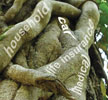

The global economic downturn has sparked a niggling growth in fraudulent activity.
Fraud is part and parcel of the insurance market. And the consumer who commits the crime ranges from those justifying the odd false claim with the excuse that insurance companies demand ever escalating premiums from them year on year, so why should they feel guilty claiming some of their hard earned money back, to hard core organised crime.
If one takes the combined sum of all fraudulent claims, no matter how big or small, the business of insurance fraud is costing insurance companies billions.
Vivienne Pearson, MD of Image and Reputation for the South African Insurance Association, says it is very difficult to quantify insurance fraud. In an attempt to give the market an idea of the magnitude of the problem she illustrates the crisis with the following example: “If we were to assume that an average of 10% of short term insurance claims contain an element of fraud, then the South African economy would, at present, be losing R2 billion a year to fraud. And what is frightening is this is a realistic assumption. In fact, the figures are possibly much higher.”
Pearson underlines the problem that investigators have in monitoring insurance fraud. “They simply cannot inspect every claim,” says Pearson. “There is a huge amount of underlying fraudulent possibilities, the sheer scale being incredibly difficult to keep abreast of.”
“Up to 30% of insurance claims can be fraudulent,” says Pearson. “However, providing exact figures is virtually impossible due to a lack of proof. What we do see from our investigations, is that insurance fraud is a serious problem, carrying in its wake a number of serious after-effects, many of which directly hit the consumer – the most significant being the issue of escalating insurance premiums. At the end of the day, it is the innocent insurance customer who pays the ultimate price for insurance fraud. The more losses an insurance company entails due to false claims, the more they will have to increase premiums to recuperate these losses.”
Estimating the losses
It is extremely difficult to determine an exact value on the cost of insurance fraud to South Africa, due to its undetectable nature. As a result industry specialists declined to give figures. They did agree though, that the number of detected cases of insurance fraud is low, thus blurring the accuracy of statistical evidence.
Who else is responsible?
Consumer fraud is not the only factor that is contributing to the escalating insurance fraud crisis. The role of the insurer and the broker are equal participants in the crime. Contracts, for example, can be structured in such a way whereby both parties can benefit from exploiting the system. Take for example property insurance. By over-insuring a property the insurer gets access to greater profits, whilst the client stands to gain by destroying his property in order to get paid out a greater value that the property was actually worth.
It is rife. But where?
Insurance fraud is prevalent in the following sectors:
* Life insurance
Faking a death, for example.
* Health care insurance.
Medical fraud is prevalent because nearly all parties involved find it favourable in some way. The most common perpetrators of healthcare insurance fraud are the health care providers. Physicians see it as necessary to provide quality care for their patients. Patients can be willing to accept it when it affects their own medical care. Programme administrators can aid in the process by trying to maximise the services of their providers.
Doctors are often inclined to adopt a kind of fidelity to their patients which can lead to fraudulent practices such as billing insurers for treatments that are not covered by the patient’s insurance policy. To do this, physicians will often bill for a service which is covered by the policy, but is not necessarily the service they carried out.
* Automobile insurance.
There is a wide variety of schemes used to defraud automobile insurance providers. Examples of soft auto-insurance fraud can include filing more than one claim for a single injury, filing claims for injuries not related to an automobile accident, misreporting wage losses due to injuries, or reporting higher costs for car repairs than those that were actually paid. Hard auto-insurance fraud can include activities such as staging automobile collisions, filing claims when the claimant was not actually involved in the accident, submitting claims for medical treatments that were not received, or inventing injuries. Another form of automobile insurance fraud involves registering someone other than the real primary driver of a car as the primary driver. Hard fraud can also occur when claimants falsely report their vehicle as stolen.
* Property insurance.
Motivations for this can include requesting and obtaining an insurance payout that is worth more than the value of the property destroyed, or to destroy and subsequently receive payment for goods that could not otherwise be sold. Many property insurance crimes involve arson because any evidence that a fire was started by arson is often destroyed by the fire itself.
Hard vs. soft fraud
Claims are diverse – so much so that they are categorised into a ‘soft’ and ‘hard’ rating.
Hard fraud: when someone deliberately plans or invents a loss, such as a collision, auto theft, or fire that is covered by their insurance policy in order to receive payment for damages. Criminal rings are sometimes involved in hard fraud schemes that can steal millions.
Soft fraud: far more common, sometimes also referred to as opportunistic fraud. Consists of policyholders exaggerating otherwise legitimate claims. For example, claiming more damage than was really done. Soft fraud can also occur when, while obtaining a new insurance policy, an individual misreports previous or existing conditions in order to obtain a lower premium on their insurance policy.
Source: Wikipedia
© Technews Publishing (Pty) Ltd. | All Rights Reserved.